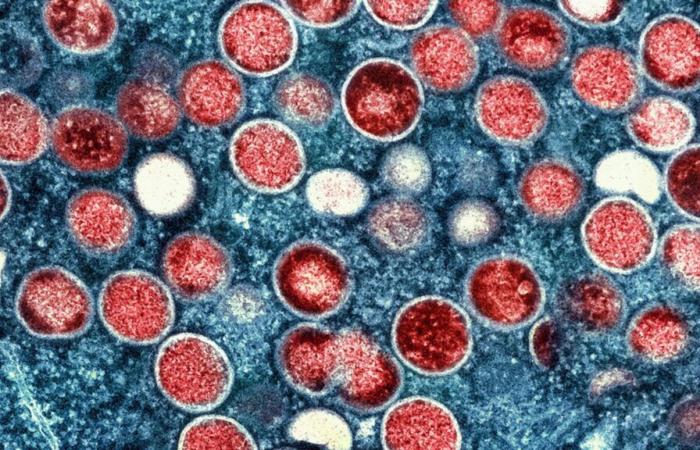Amid a less-than-enthusiastic response from health authorities, two viruses with pandemic potential continue to spread in the United States. The California Department of Health reported the first case of mpox in the United States, caused by mpox virus clade I. Meanwhile, the Centers for Disease Control and Prevention (CDC) confirmed five new human cases of H5N1 (bird flu) in Washington state.
The case of mpox is concerning because the clade I mpox virus causes more severe illness and more deaths than the clade II virus and is therefore considered “more aggressive”. The case fatality rate in clade I outbreaks ranges from 3 to 11%.
The California patient had recently traveled to East Africa and is believed to have acquired the infection in that region, where an outbreak of clade I virus is ongoing. Based on his symptoms and travel history, the patient was tested for mpox, which confirmed the infection. The patient had mild symptoms and was allowed to return home and self-isolate.
In August, the World Health Organization declared ongoing clade I mpox virus infections in Africa a public health emergency of international concern (PHEIC). As has reported According to the WSWS at the time, the response from politicians and public health officials was largely muted and the steps taken to combat the disease were minimal.
This lack of urgency is reflected today in the confirmed appearance of the virus in the United States. The failure of the global capitalist system to eradicate the virus allowed epidemics in East and Central Africa to flourish, which allowed the virus to travel to the United States.
Currently, authorities believe that the mpox virus is only transmitted through close personal contact, including sexual contact. Although they do not believe casual contact poses a significant risk of transmission, they are nevertheless investigating travelers who flew with the patient to California.
Previously, the rapid spread of clade II mpox virus worldwide had raised the specter of respiratory transmission. A detailed review data available in an article from Lancet Microbe considered the risk of respiratory transmission of clade II to be low, but could not rule it out and called for continued studies and vigilance.
Multiple clade II outbreaks are still ongoing and were declared by the WHO as a PHEIC in 2022, which is still active. WHO is holding an emergency meeting next week to determine whether PHEIC status still applies to these clade II outbreaks.
As the clade I mpox virus first emerged in North America, the CDC announced five new human cases of H5N1 avian influenza in Washington state. A sixth presumptive positive case is under investigation. The five infected people are agricultural workers who had mild symptoms and did not require hospitalization. It is assumed that they contracted the virus through infected dairy cows on the farms where they work.
Wastewater monitoring in California detected the H5N1 virus in 21 of the state’s 28 monitoring sites, including Los Angeles, San Francisco, Palo Alto, San Diego and San Jose. Officials aren’t sure how the H5N1 virus ends up in wastewater, but current hypotheses include unpasteurized milk, wild bird droppings and discarded animal products.
A recent case of H5N1 in a seriously ill young British Columbia man was investigated further. Scientists isolated and sequenced the virus from the patient. They found that this H5N1 variant is different from the one circulating in birds and livestock in the United States and Canada.
They also found that the virus had undergone several “troubling” mutations. One mutation in particular, known as PB2 E627X, makes it easier for the H5N1 virus to infect humans. This increases the potential for human-to-human transmission, which would most likely trigger a new pandemic. The mutation also makes the virus more deadly, which helps explain the patient’s severe illness.

Loading Tweet …
In the meantime, a study published in Nature Communications last week showed that the H5N1 virus was circulating among southern elephant seals in Argentina, Uruguay and Brazil in 2023. This means that the H5N1 virus has demonstrated for the first time the ability to transmit from mammal to mammal. the other on a transnational scale.
The study notes that: “From a public health perspective, mammal-to-mammal transmission could be a step in the evolution of these viruses toward human-to-human transmission. »
Elephant seal populations have been devastated by the outbreak, with a 95% case fatality rate among the pups of one seal pod.
Valeria Falabella, co-author of the study and director of coastal and marine conservation at the Wildlife Conservation Society in Argentina, said: “We were totally dismayed by the dramatic impact of the avian flu epidemic on this population. It will be decades before it returns to its 2022 size.”
Several researchers who participated in the study are part of the Argentine Institute of Virology and Technological Innovations. This organization is itself part of the Argentine National Council for Scientific and Technical Research (CONICET).
This fact is important because Argentine fascist President Javier Milei has cut CONICET’s budget by more than 30% since 2023. It is also telling that Milei was the first foreign leader welcomed by the President-elect of the United States, Donald Trump, after the election.
Trump’s welcoming of Milei and his appointment of anti-science hucksters to key positions in his administration indicate that he will similarly trash research and public health measures aimed at preventing the next pandemic. Future studies of H5N1 transmission and evolution would be eliminated, leaving workers in the dark about the growing threat and virtually guaranteeing the emergence of future pandemics.
The steady advance of two extremely dangerous viruses around the world, enabled by ruling class politics that prioritize profit over life and in turn dictate the elimination of public health science and practice , is a warning to the working class. The working class can only reorganize society to prevent future pandemics by organizing its own independent political struggle against capitalism through the International Committee of the Fourth International.
(Article published in English on November 22, 2024)




















